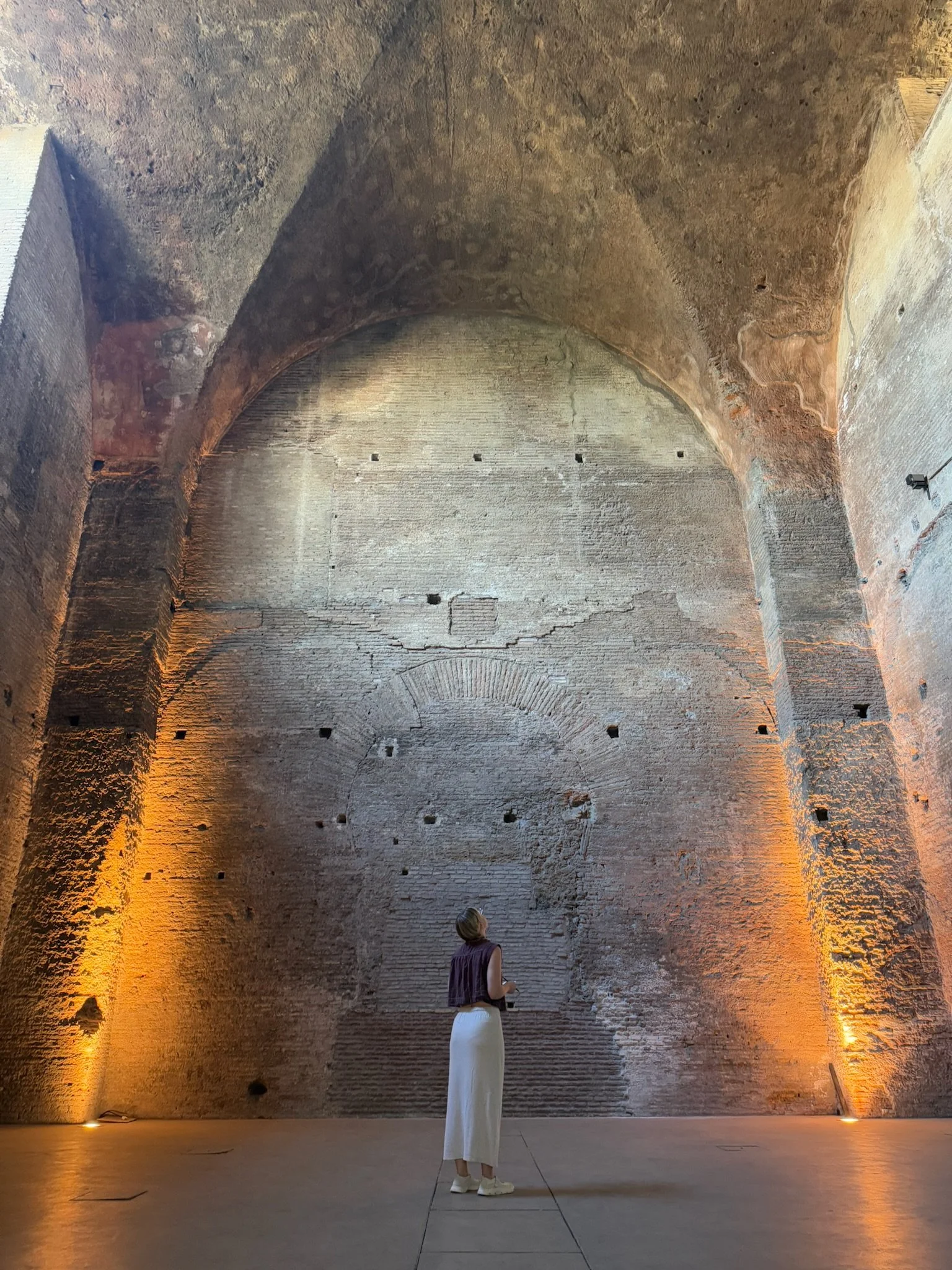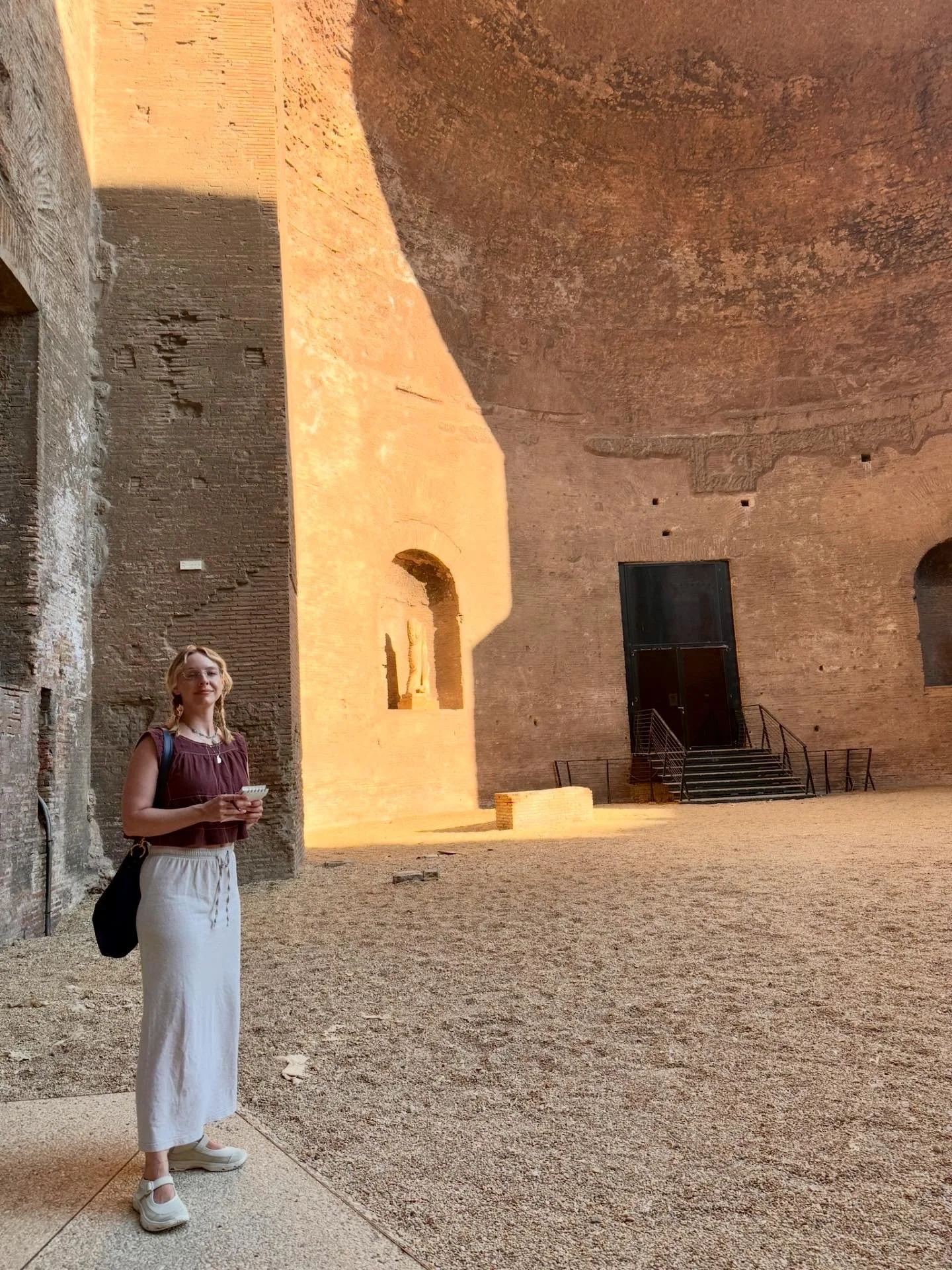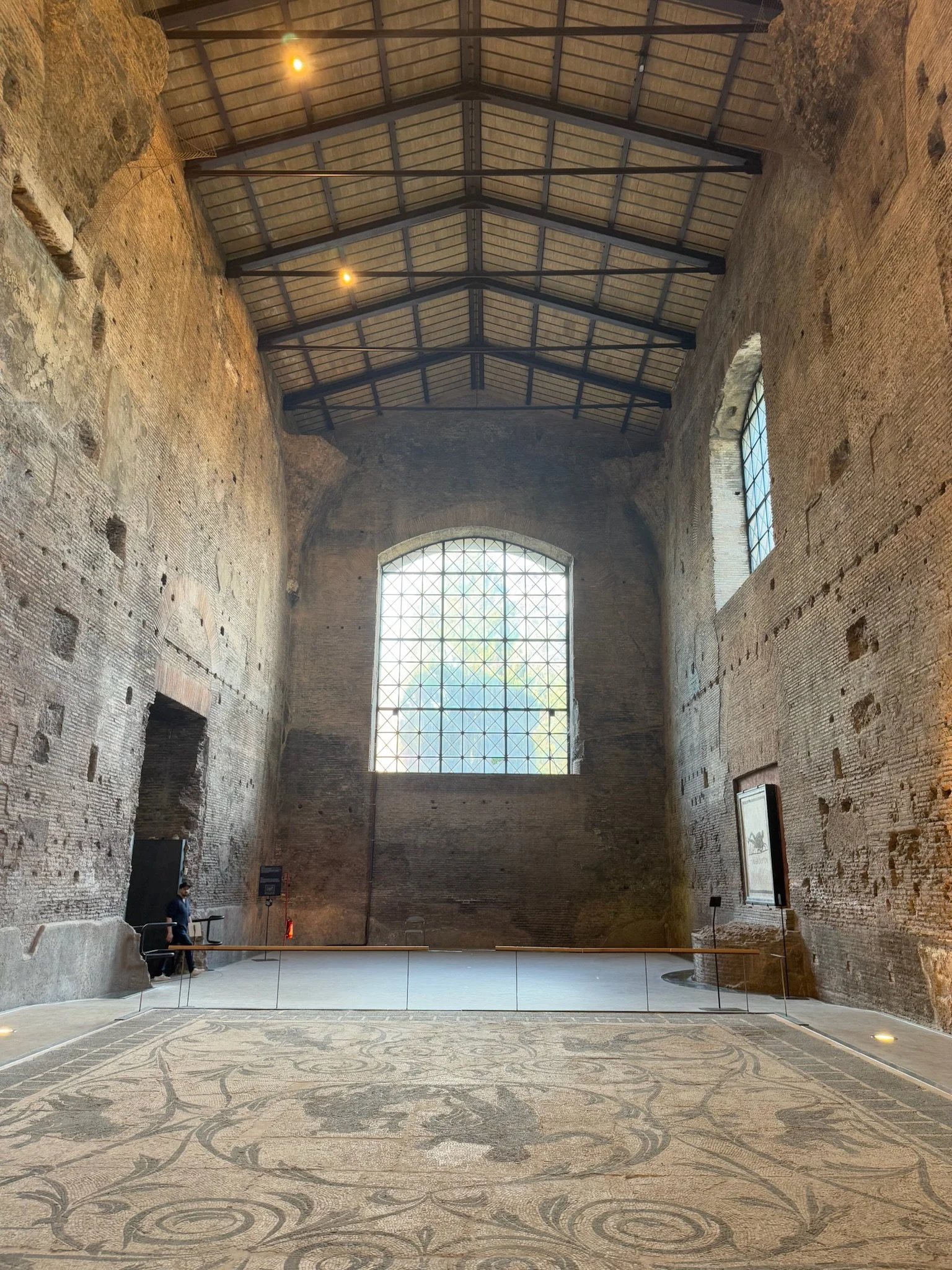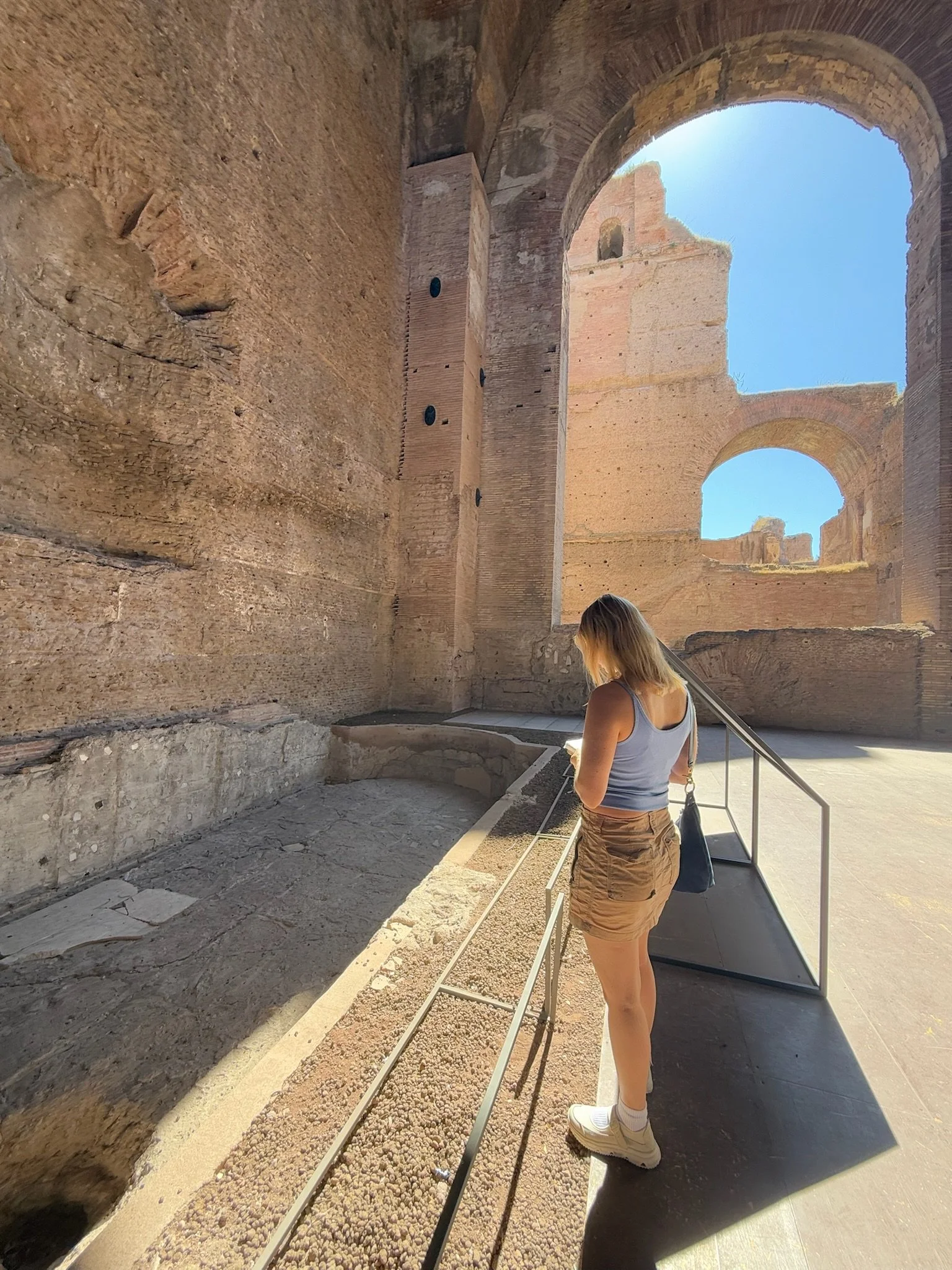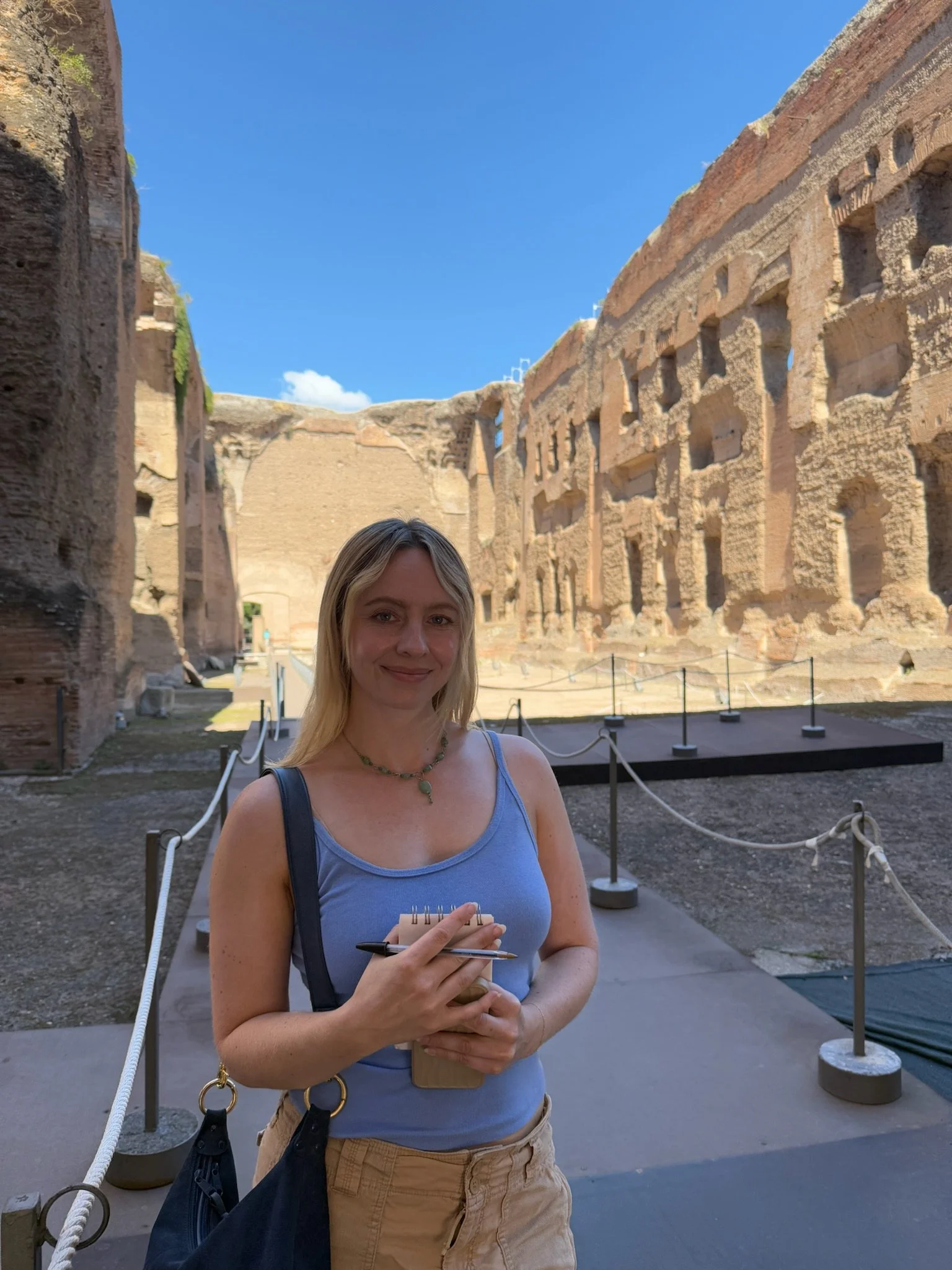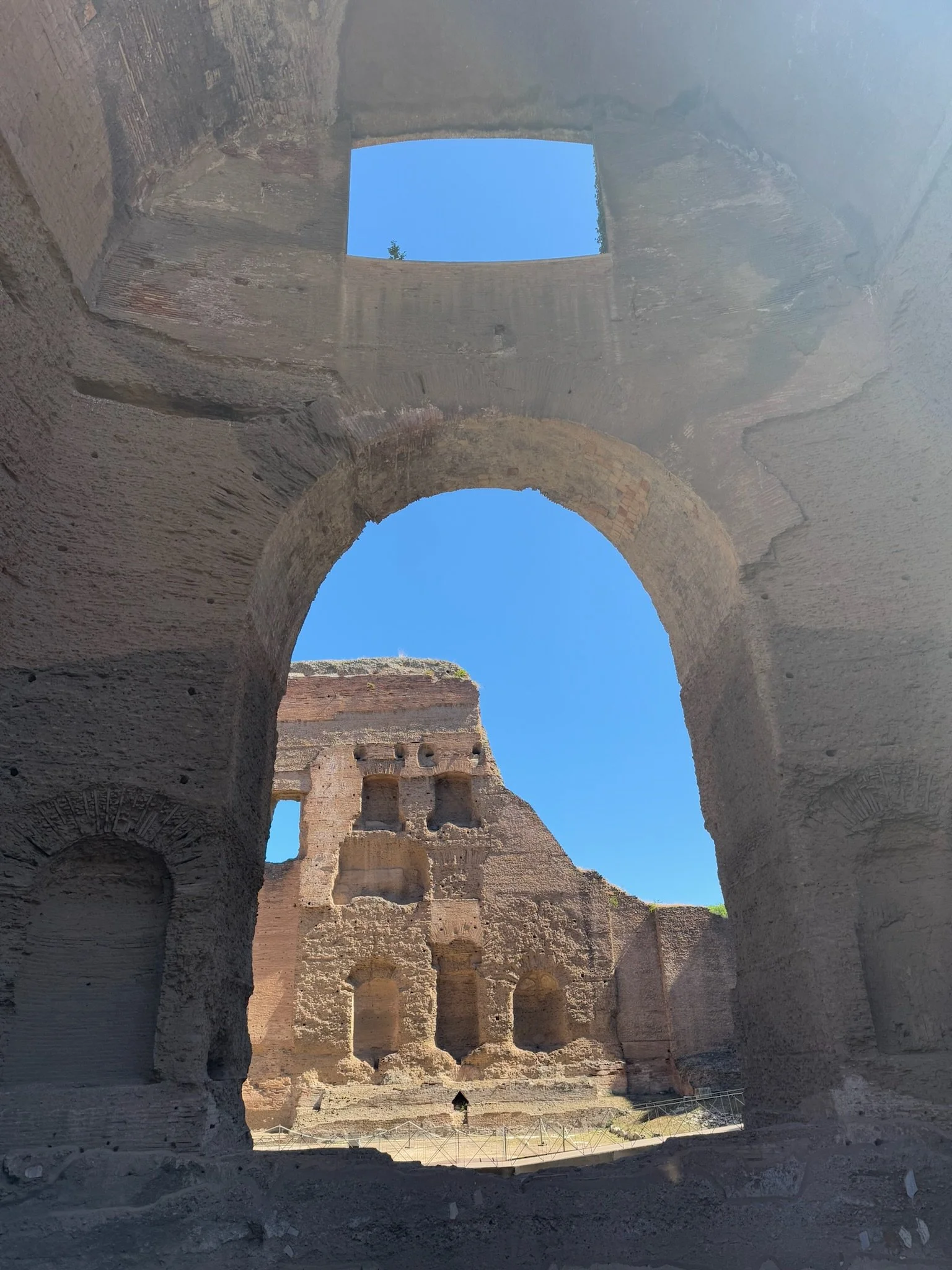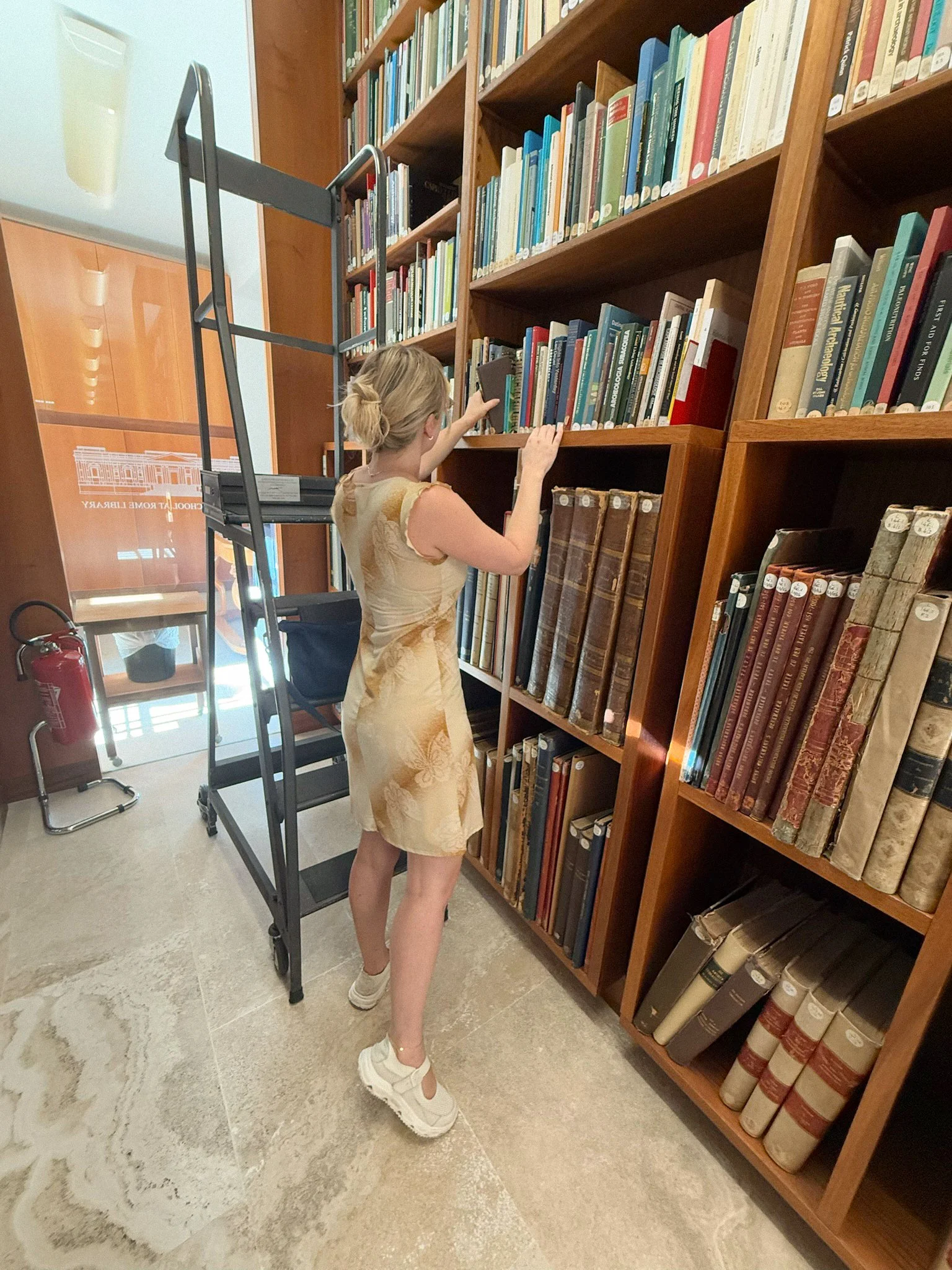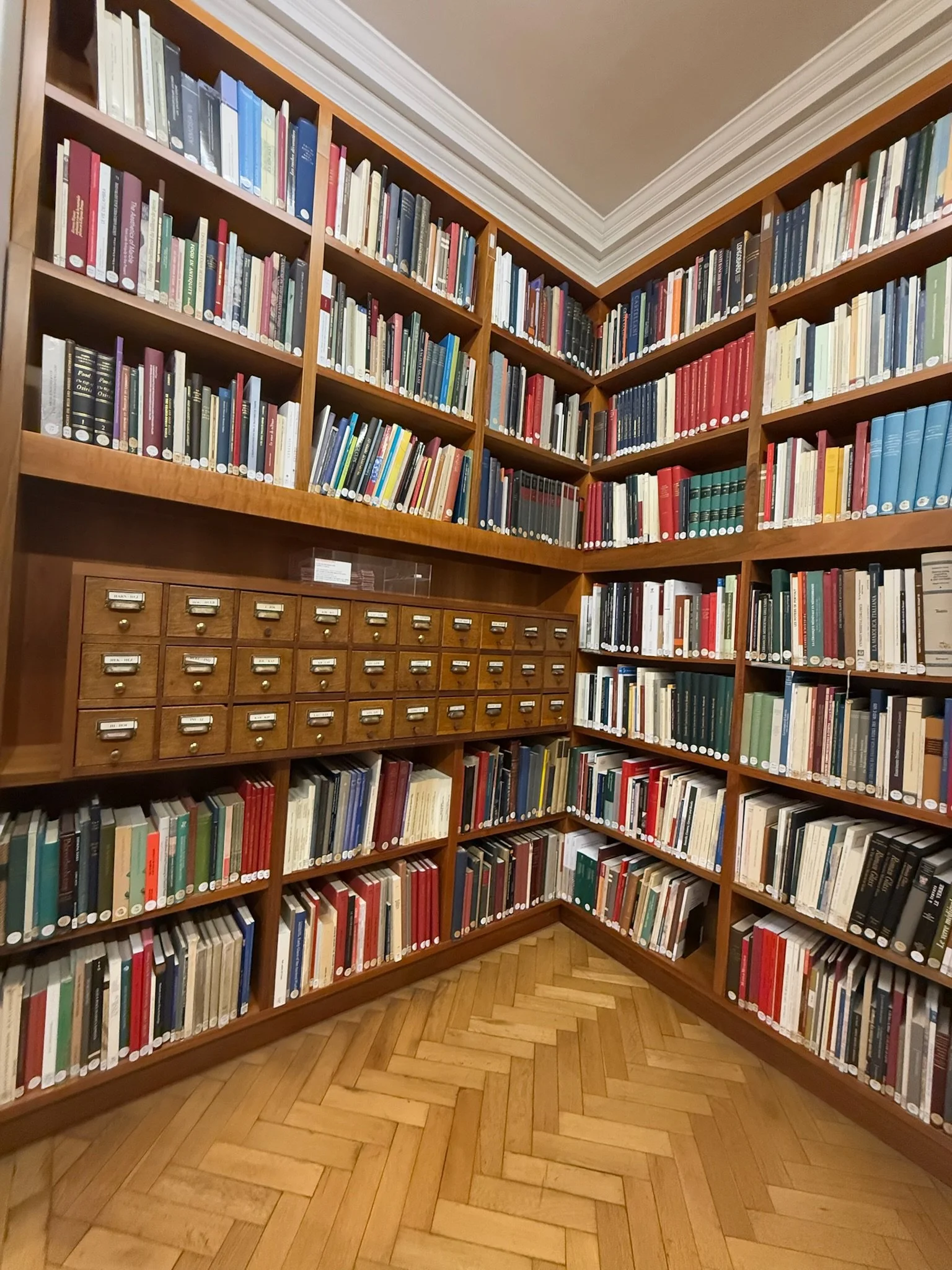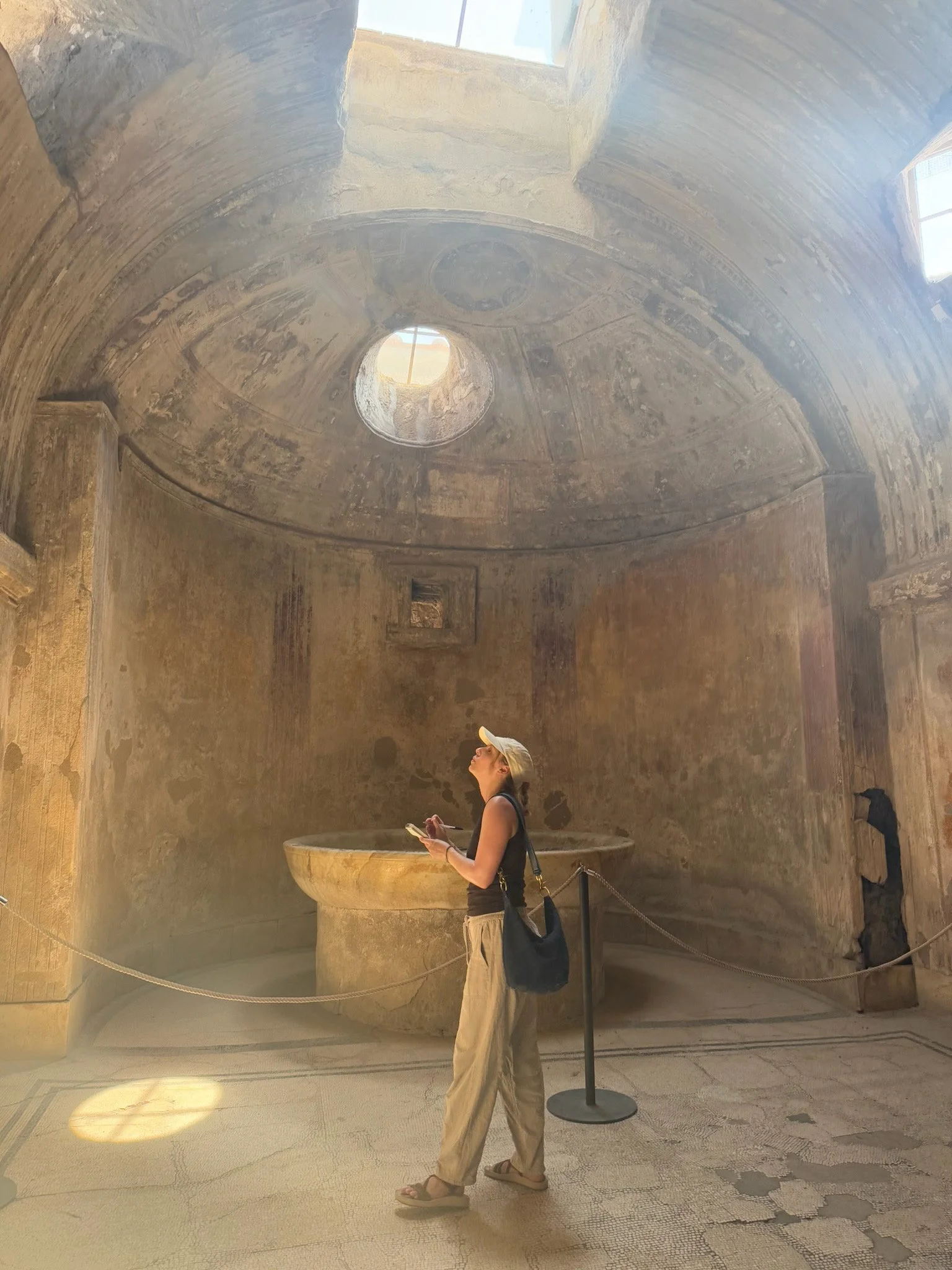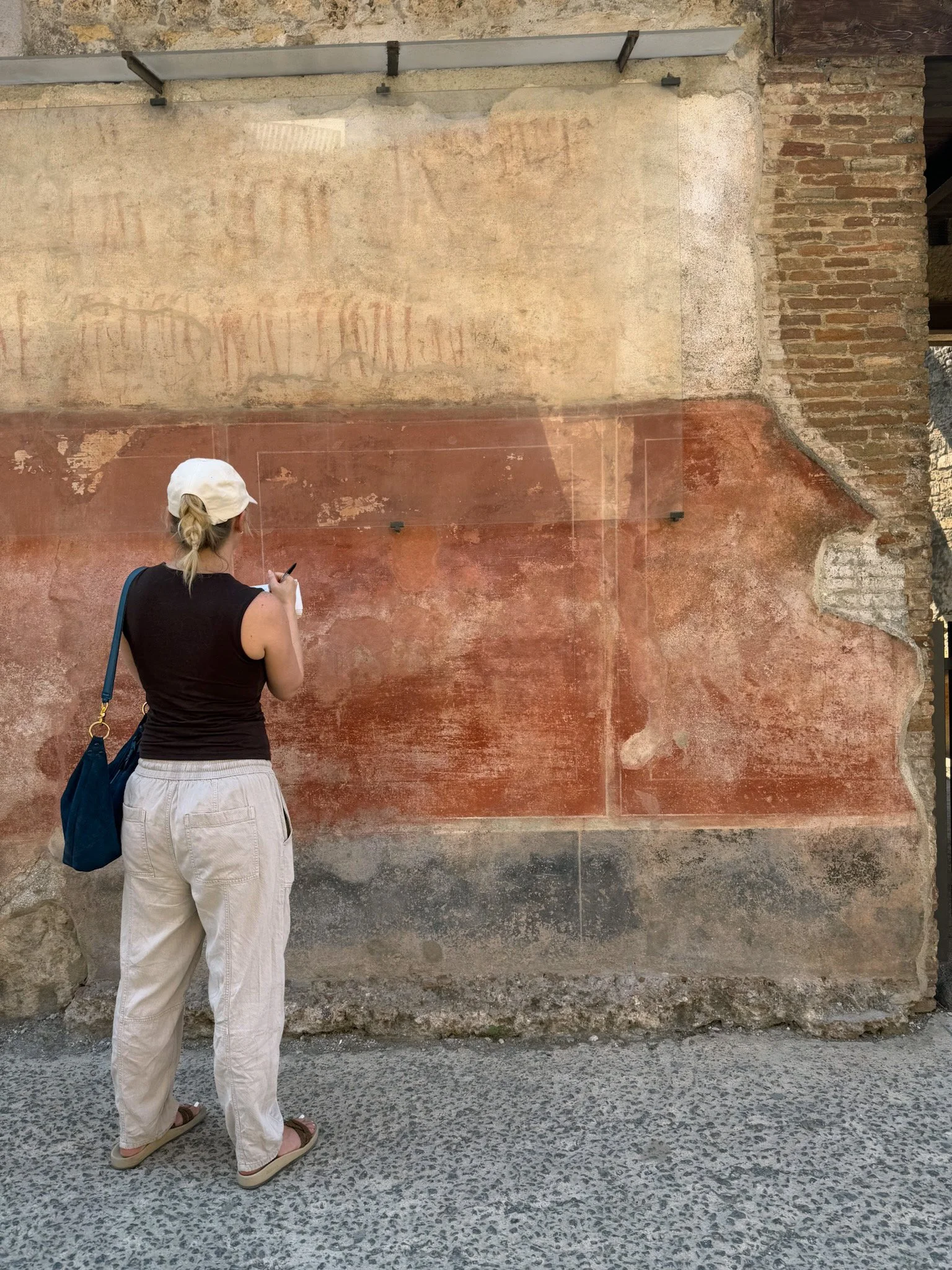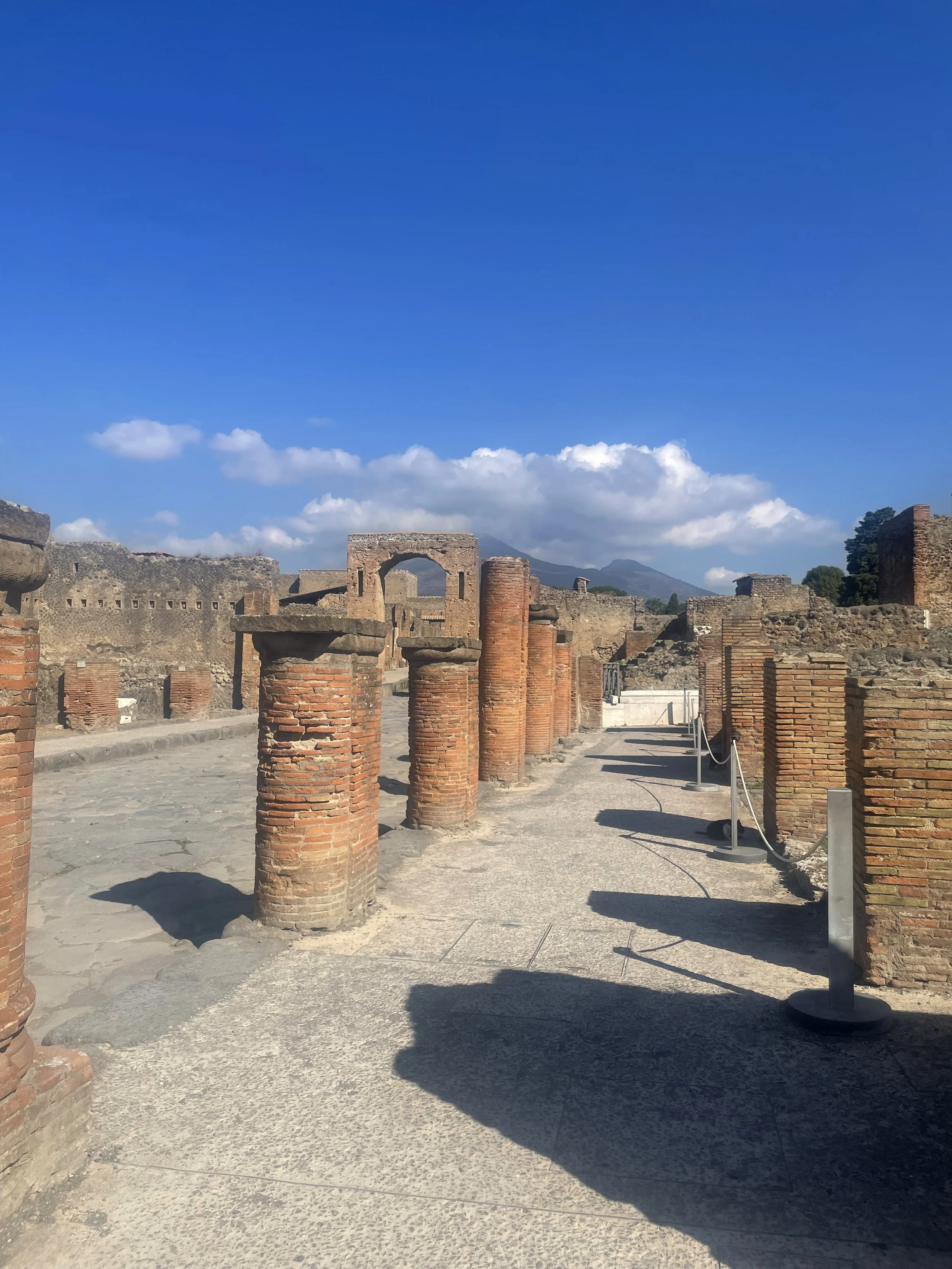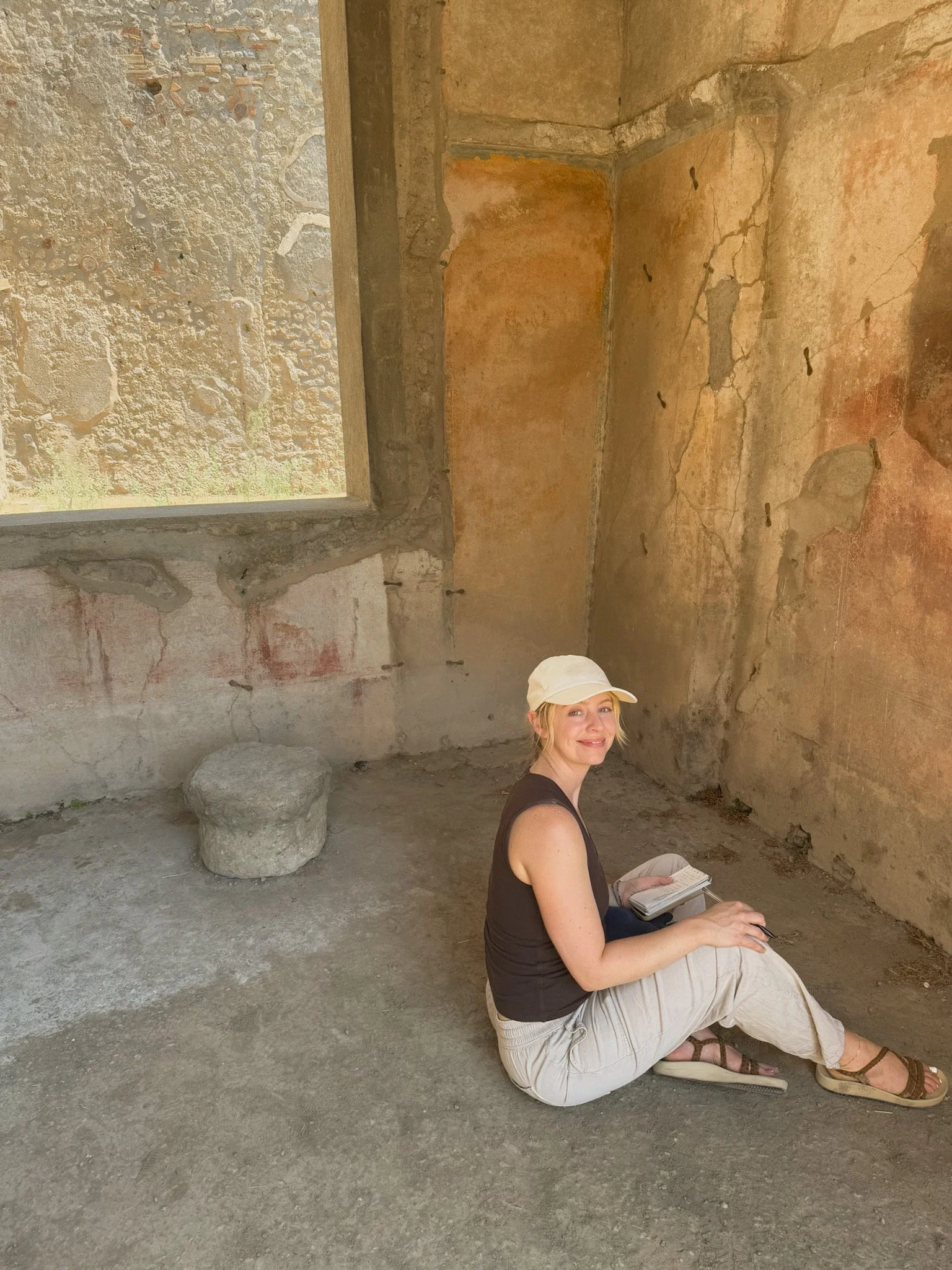The Body is the Vessel: Archaeological and Intuitive Excavations in Rome + Pompeii
Self-Directed Artist Residency, August–September 2025
This project is made possible through the generous support of private art collectors
The Body is the Vessel is a 14-day self-directed artist residency focused on immersive, site-specific research in the ancient cities of Rome and Pompeii. This project challenges traditional boundaries within visual art by merging spiritual channeling with archaeological research - two disciplines rarely held in dialogue.
Centering on the Roman bathhouse as a site of embodiment, healing, and community, this work explores how art can respond to the energetic residue of place. This project is an opportunity to treat spiritual channeling not just as a private experience, but as a legitimate methodology - one capable of retrieving and visualizing unseen or forgotten information. By working at the intersection of intuition, scholarly research, and site-based study, the project reframes what counts as valid data in both artistic and historical practices.
This approach draws inspiration from figures like Frederick Bligh Bond, whose excavations at Glastonbury Abbey were guided by spiritual communication - a practice he documented in The Gate of Remembrance. It is also deeply informed by the work of Carolyn E. Boyd, an artist-turned-archaeologist whose decades-long study of the White Shaman mural revealed complex mythological systems encoded in ancient imagery. Both offer a lineage of inquiry where the boundaries between art, science, and the sacred begin to blur - where knowledge is not only uncovered, but remembered.
Phase 1: Rome
The residency begins in Rome, where I’ll conduct on-site research at major bathhouse complexes including the Baths of Diocletian and the Baths of Caracalla, while attending guided archaeological tours across the city. I’ve secured access to the library at the British School at Rome, an internationally renowned institute supporting contemporary artists and scholars. There, I’ll engage with excavation records and texts in Roman archaeology to support my field research. Through sketches, visual journaling, and meditative channeling, I’ll begin gathering source material for a new body of work.
Phase 2: Pompeii
In Pompeii, my research centers on a significant new discovery: the unearthing of one of the most intact private Roman bathhouses to date, announced in January 2025. This event, coming shortly after my self-funded research at the Roman Baths in Bath, England in September 2024, reflects a deepening synchronicity in my practice. Staying in nearby Sorrento, I will spend time at the site sketching, meditating, and continuing my process of visual transcription - engaging with the spiritual and energetic imprint of the space.
This residency marks a pivotal expansion in my practice by integrating archaeological research in a more structured and profound way. While my work has long been guided by intuitive and spiritual processes, it is clear that a deeper, more intricate intelligence resides in the physical layers of these ancient sites. This project goes beyond a simple “visit and respond” approach. It proposes that my art emerges through a dynamic relationship between embodied knowledge, scholarly inquiry, and forces beyond the visible. This project contributes to my curiosity around interdisciplinary, intuitive, and spiritually attuned art practices, offering a new model of how art can serve as both historical recovery and metaphysical communication.
Photographs of this project by Amy Sundell: best friend and favorite travel companion
